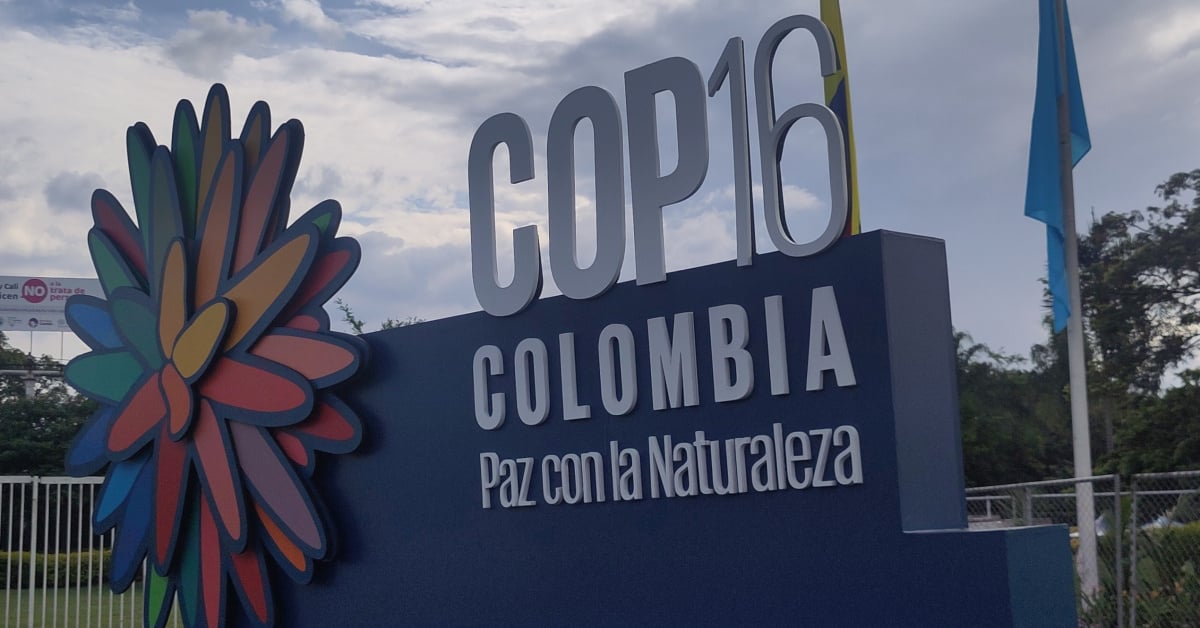What is COP16 and what does it mean for our planet’s future?
9 January 2025 | By: Newcastle University | 3 min read
In October 2024, Newcastle University Researchers attended the UN Biodiversity Conference (COP16) in Cali, Columbia, to discuss the conservation of biodiversity and sustainable use of natural resources.
Contents:
- What was COP16?
- What is the CBD?
- What happened at COP16 and what was achieved?
- What is the difference between COP29 and COP16?
- What’s next for global diversity policy?
What was COP16?
The 16th United Nations Biodiversity Conference (COP16), which took place in October 2024, brought together stakeholders from around the world to discuss the progress being made towards a set of goals to halt and reverse biodiversity loss over the next decade and beyond.
Attendees included world leaders, non-government organisations, businesses, and leading experts in biodiversity, such as our own Newcastle University academics. Five researchers from our Modelling, Evidence, and Policy team attended the negotiations over the two-week period. With a busy negotiating agenda and diverse side-events hosted across multiple sites there was no shortage of opportunities to engage with, and learn from, biodiversity policy processes.
The previous biodiversity conference (COP15) was held in Montreal in 2022. There, the Kunming-Montreal Global Biodiversity Framework (GBF) was agreed - a UN intergovernmental agreement for the protection and restoration of biodiversity.
The GBF outlines four long-term goals towards a world living in harmony with nature by 2050, and twenty-three short-term targets to achieve this vision by halting and reversing biodiversity loss by 2030.
What is the CBD?
The CBD - Convention on Biological Diversity – is an international legally binding treaty, which commits governments worldwide to safeguard biodiversity. It covers all life on Earth; ecosystems, animals, plants, fungi and microorganisms, and focuses on achieving sustainable development – defined as human progress without threatening biodiversity. The CBD was signed in Rio de Janeiro in 1992 and entered into force on 29 December 1993.

What happened at COP16 and what was achieved?
This COP provided the opportunity for Parties to establish implementation mechanisms to deliver the weighty ambitions outlined in the GBF and included an array of agenda items covering; resource mobilisation, sustainable wildlife management, biodiversity and health, and diverse values of biodiversity (among many others).
Significant progress was made in the adoption of an Indigenous Peoples Subsidiary Body; this will complement the current Subsidiary Body on Scientific, Technical and Technological Advice, support greater collaboration from Indigenous Peoples, and strengthen the inclusion of traditional knowledge systems and values throughout the implementation of the Framework.
Furthermore, progress was made to agree on processes to share the benefits from the commercial use of genetic information, including the launch of the ‘Cali Fund’. This voluntary fund seeks to encourage industries that benefit commercially from genetic information to share 1% of their profits (or 0.1% of their revenue) with developing countries, Indigenous Peoples, and local communities.
Despite lengthy discussions over the two-week period, many stretching long into the night, Parties were unable to make progress on all agenda items. Topics relating to biodiversity financing and monitoring progress towards goals and targets are still to be resolved.
As this was the first COP since the Global Biodiversity Framework was agreed in 2022, the slow progress to agree implementation mechanisms may signal further challenges to meet the GBF’s targets by their 2030 deadline. To date, only 44 Parties have submitted NBSAPs (national biodiversity strategies and action plans for implementing the Framework) and significant hurdles over financing and implementation remain to be addressed.
What is the difference between COP29 and COP16?
COP16 and COP29 are both international conferences that address environmental issues, but they focus on different aspects of the global environmental crisis.
COP16 focuses on biodiversity and is convened by the United Nations Convention on Biological Diversity (CBD), while COP29 focuses on climate change and is convened by the United Nations Framework on Climate Change. COP29 was in Baku, Azerbaijan in November 2024, and brought together stakeholders from around the world to agree on the actions to address the climate crisis, such as limiting the global temperature rise to 1.5 degrees Celsius, helping vulnerable communities adapt to the effects of climate change, and achieving net-zero emissions by 2050.
While each conference has its own unique purpose, these issues are deeply interconnected, and their combined outcomes will significantly influence our planet's future.
What’s next for global diversity policy?
As COP16 concluded without finalising all agenda items, Parties will need to meet again in 2025 to conclude these items and officially close the meeting.
Much work still needs to be done. Many Parties are yet to produce national biodiversity plans (NBSAPs), there are significant gaps in promised financing (to the tune of $700 billion per year by 2030), and decisions around monitoring progress on many targets still need to be fleshed out.
You might also like
- read how our team has reflected on their involvement in COP16 in Cali: "Team Reflections: COP16 and the Global Biodiversity Framework"
- find out more about the Kunming-Montreal Global Biodiversity Framework (GBF)
- discover more about the United Nations Biodiversity Conference (COP16)
- find out more about how our team is working to change global policy at the UN Convention on Biological Diversity
- explore our research that influenced the GBF
- explore our School of Natural and Environmental Sciences and learn more about Modelling, Evidence, and Policy
- find out more about our researchers who attended COP16:
- Prof Philip McGowan, Professor of Conservation Science and Policy
- Prof Aileen Mill, Professor in Modelling, Evidence, and Policy
- Dr Alison Hutchinson, Research Associate Species Conservation
- Dr Élie Pédarros, Research Associate for the Conservation and Sustainability Consortium of Academic Institutions (CASCADE)
- Dr Francesca Ridley, Research Associate
